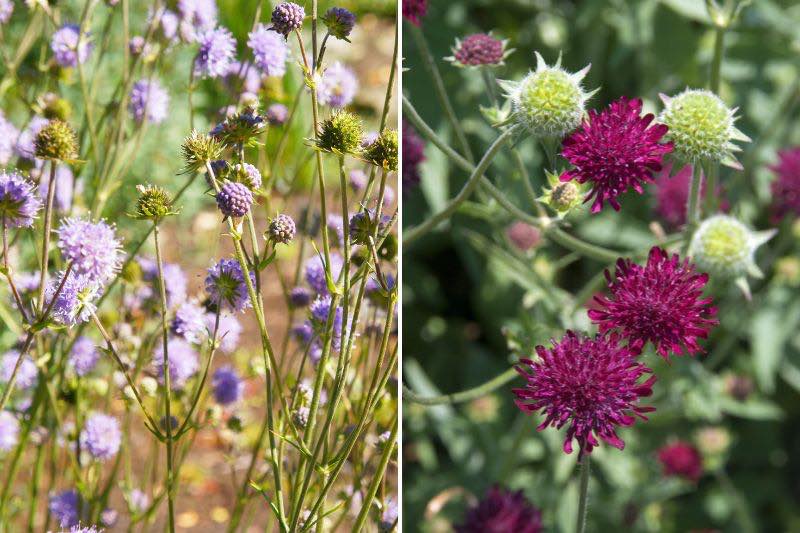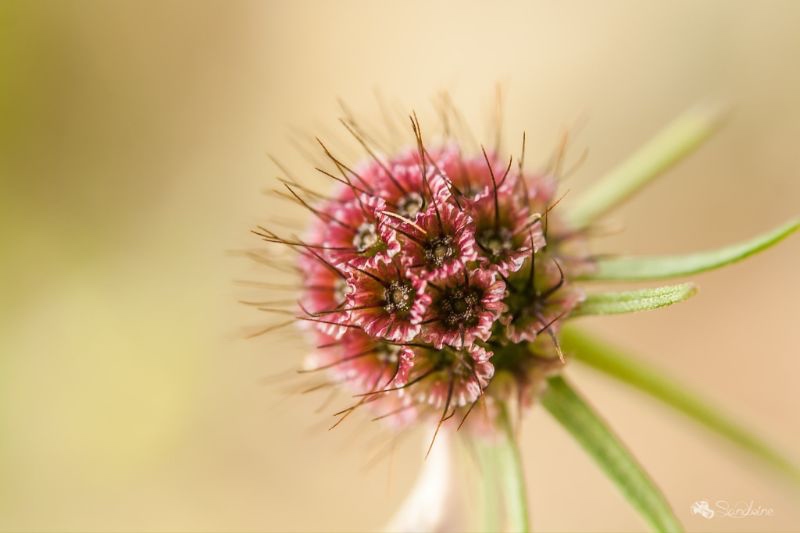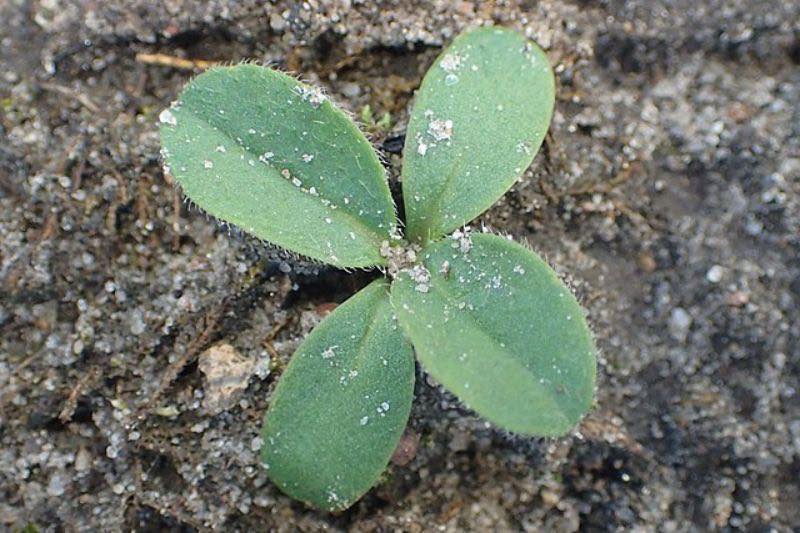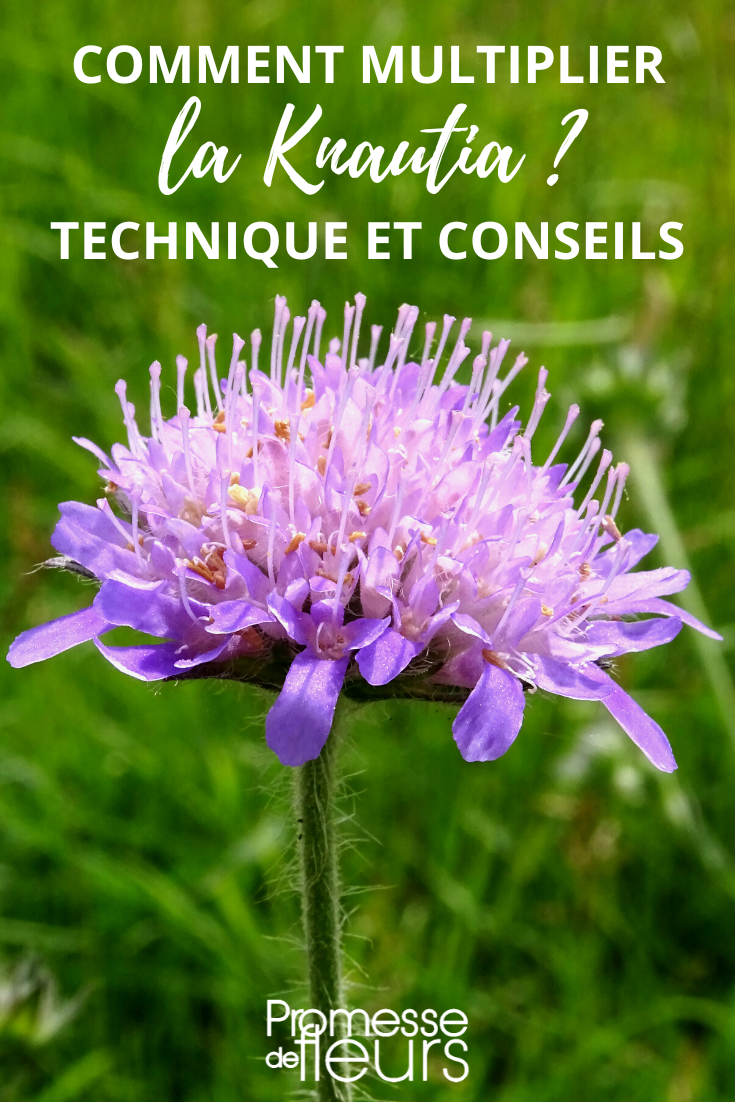Knautia, also called field scabious or field knautia, is a perennial prized for its unpretentious, airy, colourful and cheerful flowers, in domed heads; generous too, as they often flower from June until the first frosts. Colour varies by species: mauve in Knautia arvensis and deep crimson for Knautia macedonica. Hardy and easy to grow, they enjoy sun, free-draining soil and tolerate drought. You can multiply knautias in two ways: by sowing or by propagation by cuttings.

Sowing knautia
Sowing is the method best suited to multiplying knautias. They respond well to this technique, with good chances of success.

When and how to sow field scabious?
There are three ways to collect and sow Knautia seeds:
- Collect seeds yourself after flowering, which means leaving flowerheads in place uncut. Do this in autumn, when seeds are ripe, before they are shed.
- Buy knautia seeds: Knautia arvensis or Knautia macedonica
- Let flowers self-seed. This method does not guarantee success, but if soil suits the plant it can reappear on its own. Soil should be light, loose and well drained, in a warm position. If plant returns naturally, it will not become invasive. Let plant go to seed and nature will do the rest. The following spring, learn to recognise juvenile plants so you do not weed them out.
The best time to sow knautias is early spring, in March or April. For collected or purchased seeds, it is useful to stratify them first (subject them to a period of cold) to encourage germination. Place seeds in a plastic bag with sand or vermiculite, moisten lightly and store in the fridge for 3 weeks before the recommended sowing period. Then proceed as follows:
- Fill buckets with seed compost or a fine-structured potting compost to which you can add a little sand.
- Firm lightly to obtain a level surface.
- Sow a few seeds. Cover with a thin layer of compost.
- Water gently with a fine spray, ideally using a mister.
- Keep under cover at 20–24 °C, in a bright place out of direct sun, ensuring compost remains slightly moist.
- You can place a small transparent cover (glass or plastic) over the pot to retain moisture in the compost.
- Label your sowings: plant, variety, sowing date.
- Seedlings usually emerge in 15–21 days.
- When seedlings reach 5 cm, transplant into individual 7 cm pots. Keep the most vigorous.
- Put outside once risk of frost has passed.
- Plant established Knautia plants in the garden or in pots.
- Prepare soil or substrate by enriching with amendments such as compost, manure or potting compost.
As Knautia is very hardy, you can also choose to sow directly in situ in autumn to see it emerge the following spring. In that case the plant will be earlier. You can combine methods to find what works best for you (consider slugs and birds that may steal seeds sown in place) and choose the option that suits you.
Direct sowing outdoors without winter protection is possible in regions with mild winters. Elsewhere, provide temporary protection to shelter young plants from harsh winter conditions.
- On area to be sown, work soil to obtain a fine, homogeneous and flat seedbed: break clods, remove large stones, weeds and roots. Add some compost, then level soil with a rake.
- Sow by scattering seeds. You can sow broadcast for a natural effect. If seeds are small, mix with a little sand to make handling easier.
- Cover with a thin layer of seed compost.
- Firm lightly using back of a rake.
- Water with a fine spray.
- After emergence, thin out and keep only the healthiest and most vigorous seedlings.

Propagate Knautia by cuttings
Knautia can also be multiplied by propagation by cuttings of basal stems in spring, in April or May. Unlike sowing, this technique guarantees young plants identical to the parent variety. This is useful if you grow specific cultivars such as 'Red Knight', ‘Mars Midget’ or ‘Thunder and Lightning’, but not for botanical species.
How to take a cutting of Knautia?
- With pruning shear or a knife, take a stem segment from base of plant bearing a few leaves. Make a clean cut just below a node. Remove lower leaves so they do not touch the soil.
- Optionally dip base of cutting in rooting hormone.
- Prepare a pot of fine potting compost suitable for sowing and cuttings and plant your stem in it.
- Firm well and water.
- Cover pot with a plastic bottle or place in a mini greenhouse to retain humidity and warmth, provided leaves do not touch sides of cover.
- Place pot in light but out of direct sun.
- Water regularly until rooting is established to keep substrate slightly moist.
- Ventilate occasionally to prevent disease.
- Plant out your developed young plant in ground or into a pot.
































Comments